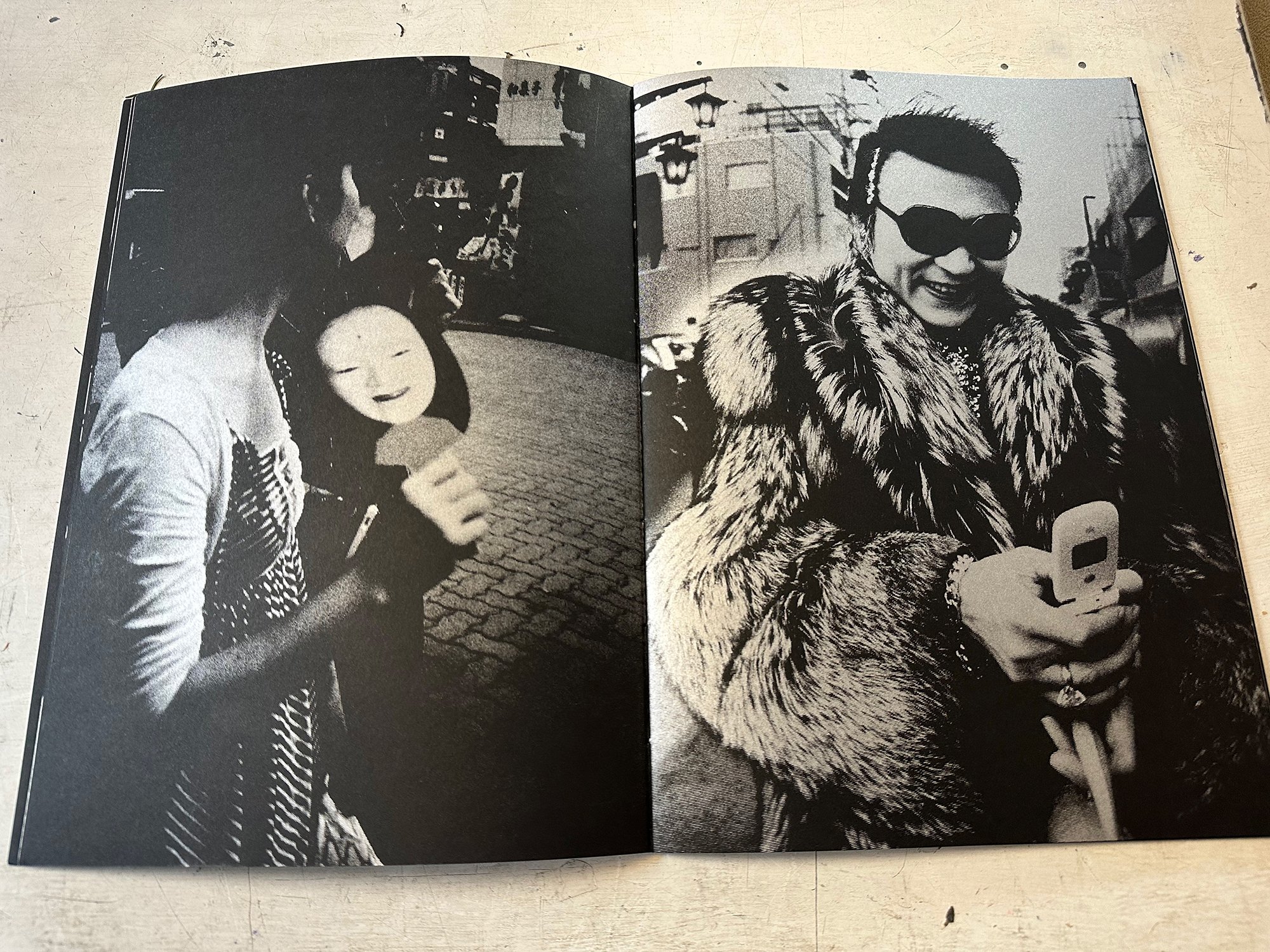 Image 1 of 4
Image 1 of 4

 Image 2 of 4
Image 2 of 4

 Image 3 of 4
Image 3 of 4

 Image 4 of 4
Image 4 of 4





ASAKUSA by Yoshi Yubai
Another beautiful hand-screened edition from Yoshi Yubai!
24 photographs of Asakusa taken in 2009 & 2010, with an introduction by Penny Rimbaud.
Hand screen-printed in silver ink on black paper in an edition of only 200. All images were shot on film and printed in the darkroom. Published by Club del Prado.
SOLD OUT - but copies may still be available here at the publisher website.
Another beautiful hand-screened edition from Yoshi Yubai!
24 photographs of Asakusa taken in 2009 & 2010, with an introduction by Penny Rimbaud.
Hand screen-printed in silver ink on black paper in an edition of only 200. All images were shot on film and printed in the darkroom. Published by Club del Prado.
SOLD OUT - but copies may still be available here at the publisher website.
Another beautiful hand-screened edition from Yoshi Yubai!
24 photographs of Asakusa taken in 2009 & 2010, with an introduction by Penny Rimbaud.
Hand screen-printed in silver ink on black paper in an edition of only 200. All images were shot on film and printed in the darkroom. Published by Club del Prado.
SOLD OUT - but copies may still be available here at the publisher website.
Yoshi: “My photography book about Asakusa, the traditional district of Tokyo, shot from 2009 to 2010. (RE/Search stayed at a hotel in Asakusa in 2019.)
“Asakusa is famous as the old part of Tokyo. Every single tourist visits there. There is a landmark Kaminarimon Gate by Senso-ji (temple), but on the other hand, Asakusa is famous for the weirdos, old prostitutes, and transvestites. Also, there is a huge off-track betting booth there. On the weekends, there are a bunch of weirdos there.
“I moved there after I came back from San Francisco, finding a job at the Izakaya. I carried the point-and-shoot camera in my pocket all all times, so, I could shoot any time—before and after work and during work as well.
“I tried to capture the last moment of ‘the real Asakusa’ before completion of the Tokyo Skytree that is the new landmark of gentrification.”
